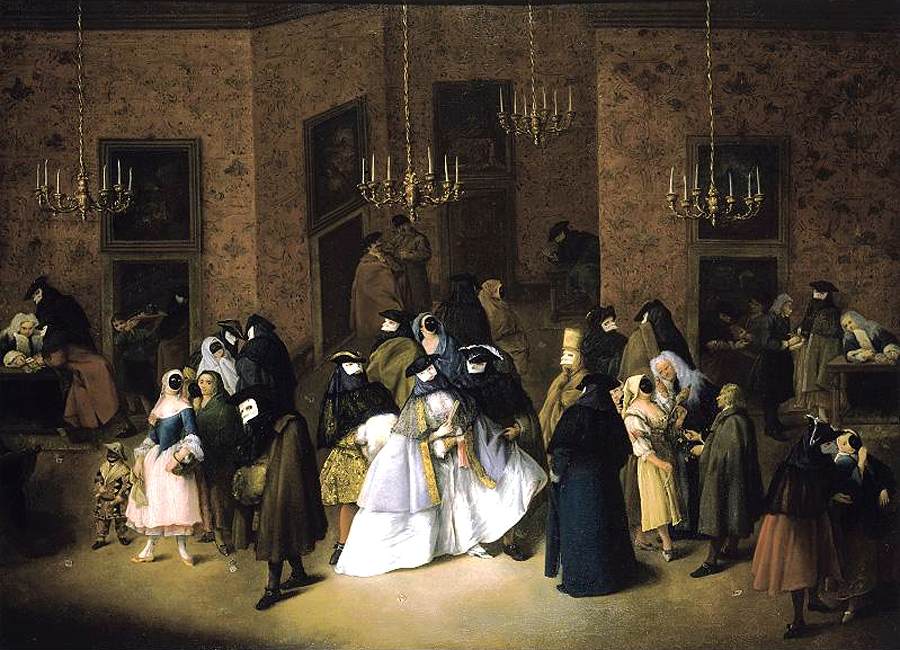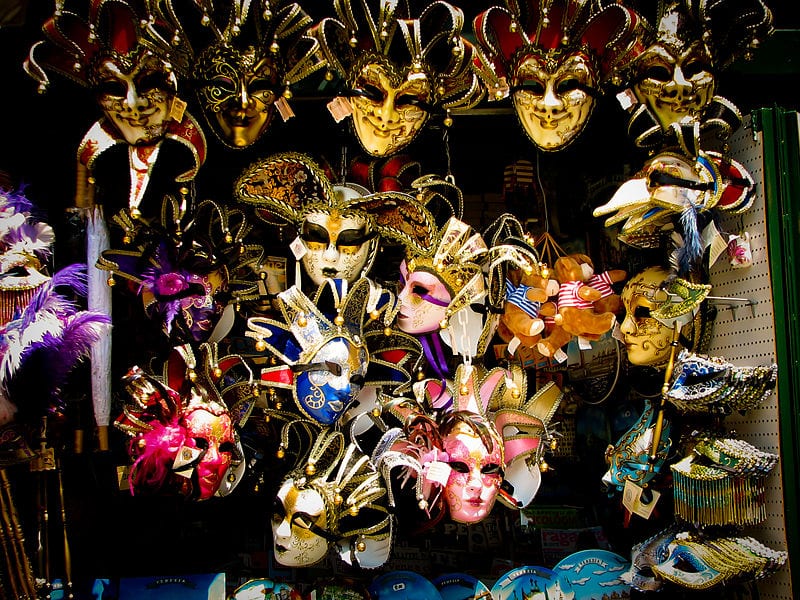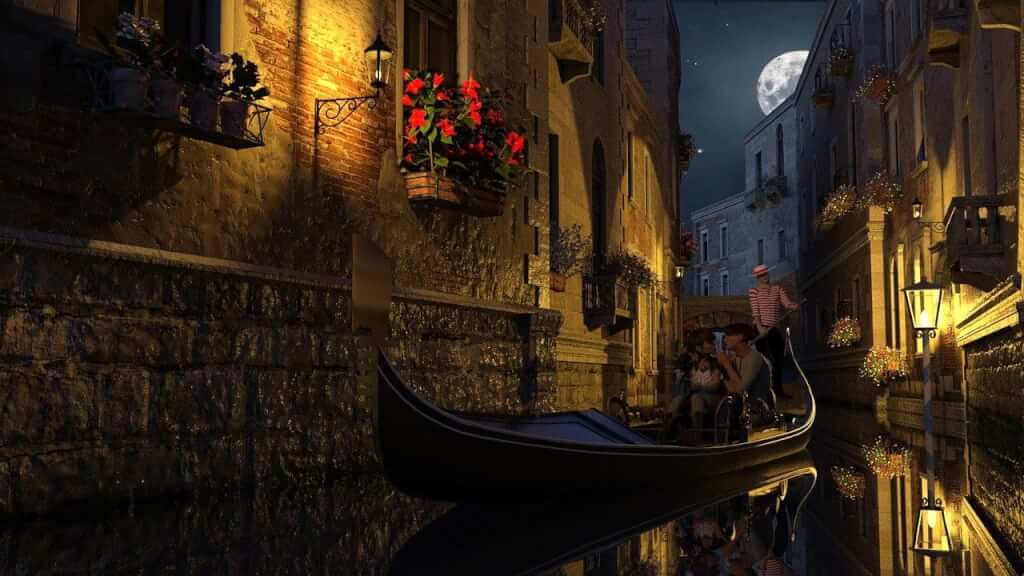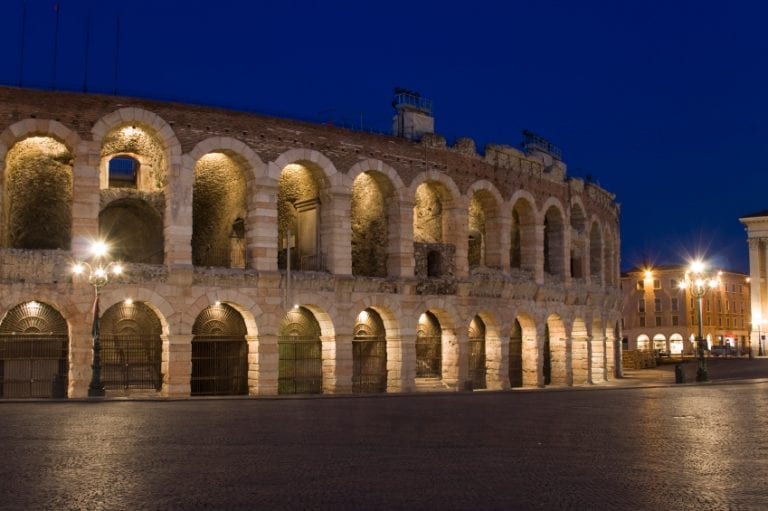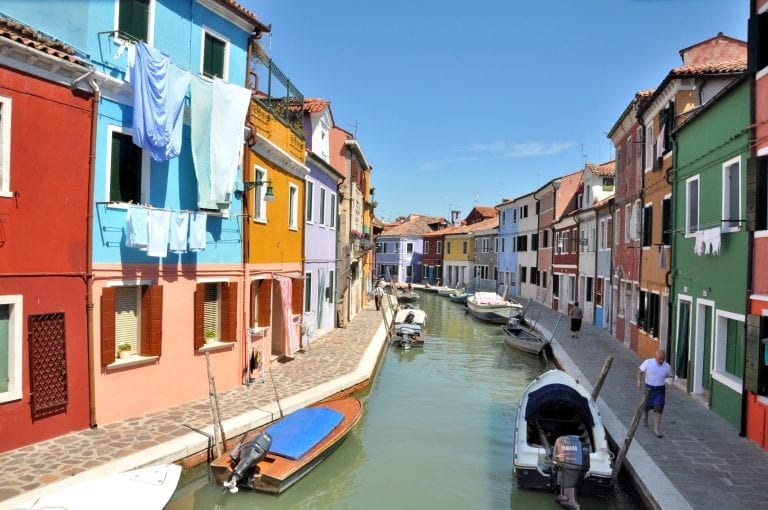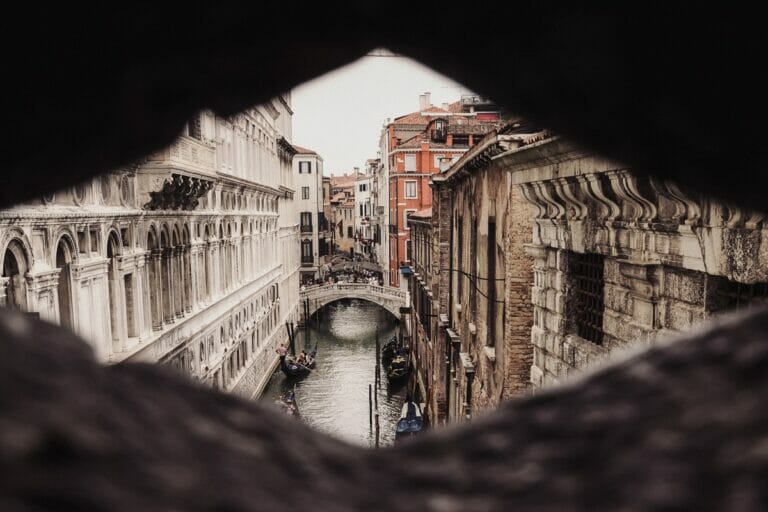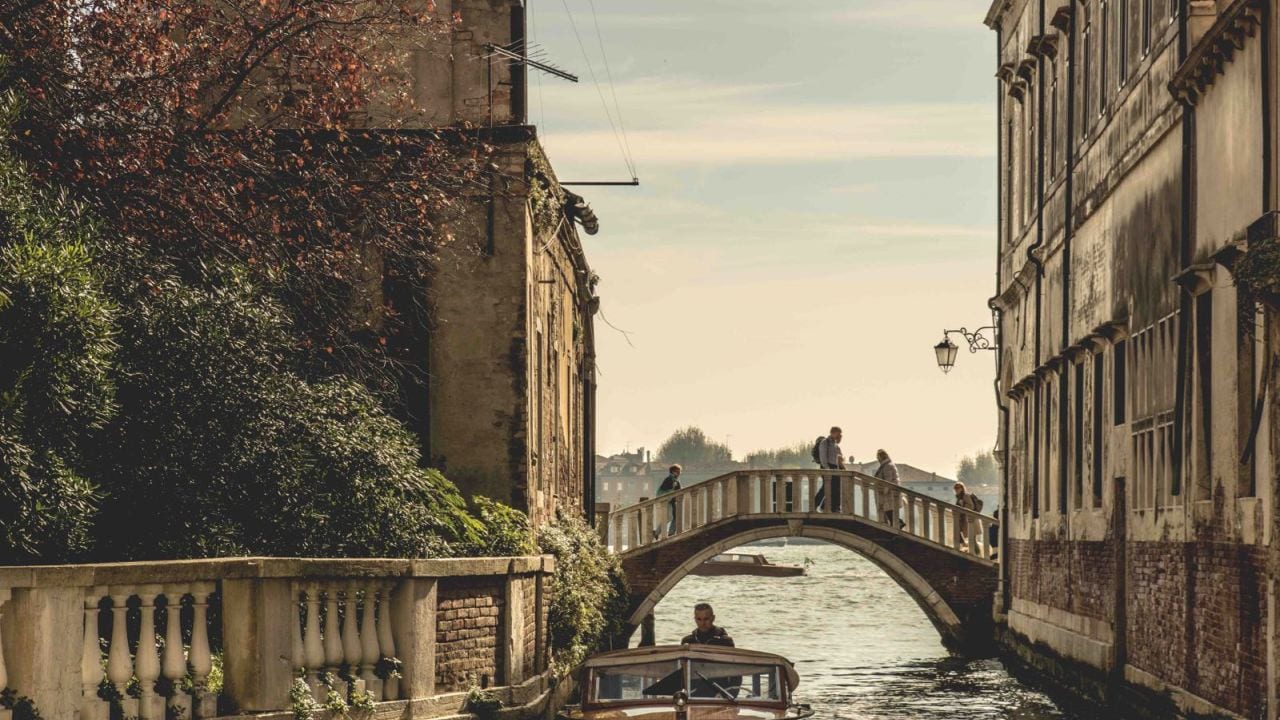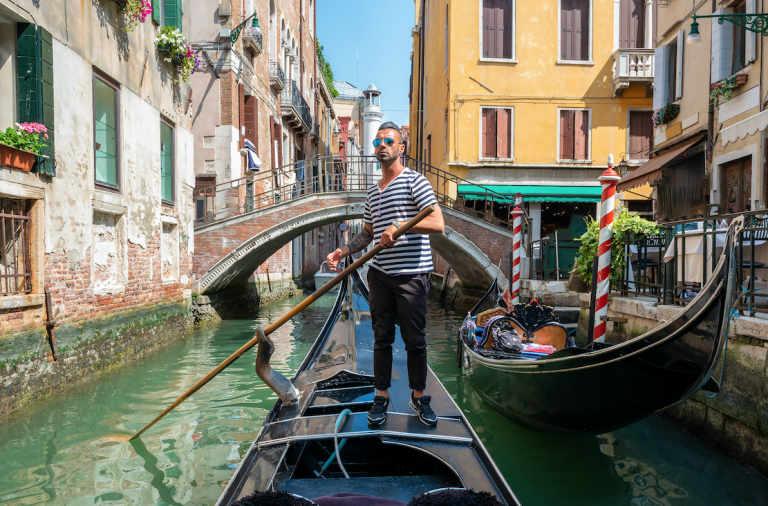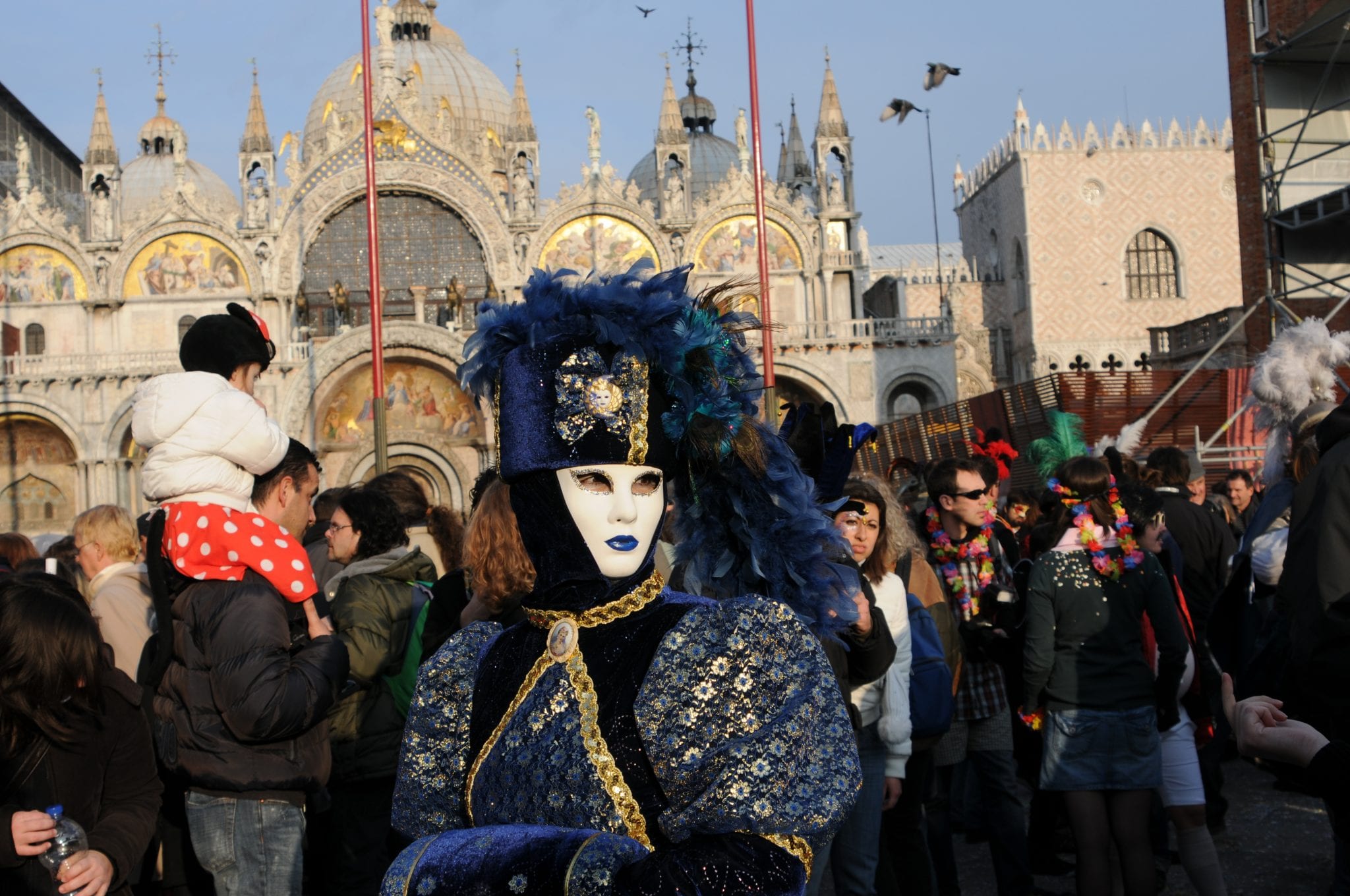
Carnevale: All About Carnival in Venice (Venetian Masks & More!)
April 12, 2024
Carnival (or “Carnevale”) is one of the biggest celebrations in Italy – and from Venetian masks to masquerade balls, no place does it like Venice! Like the idea of seeing the city at its most festive and colorful? Here’s a handy Q&A about Carnevale in Venice!
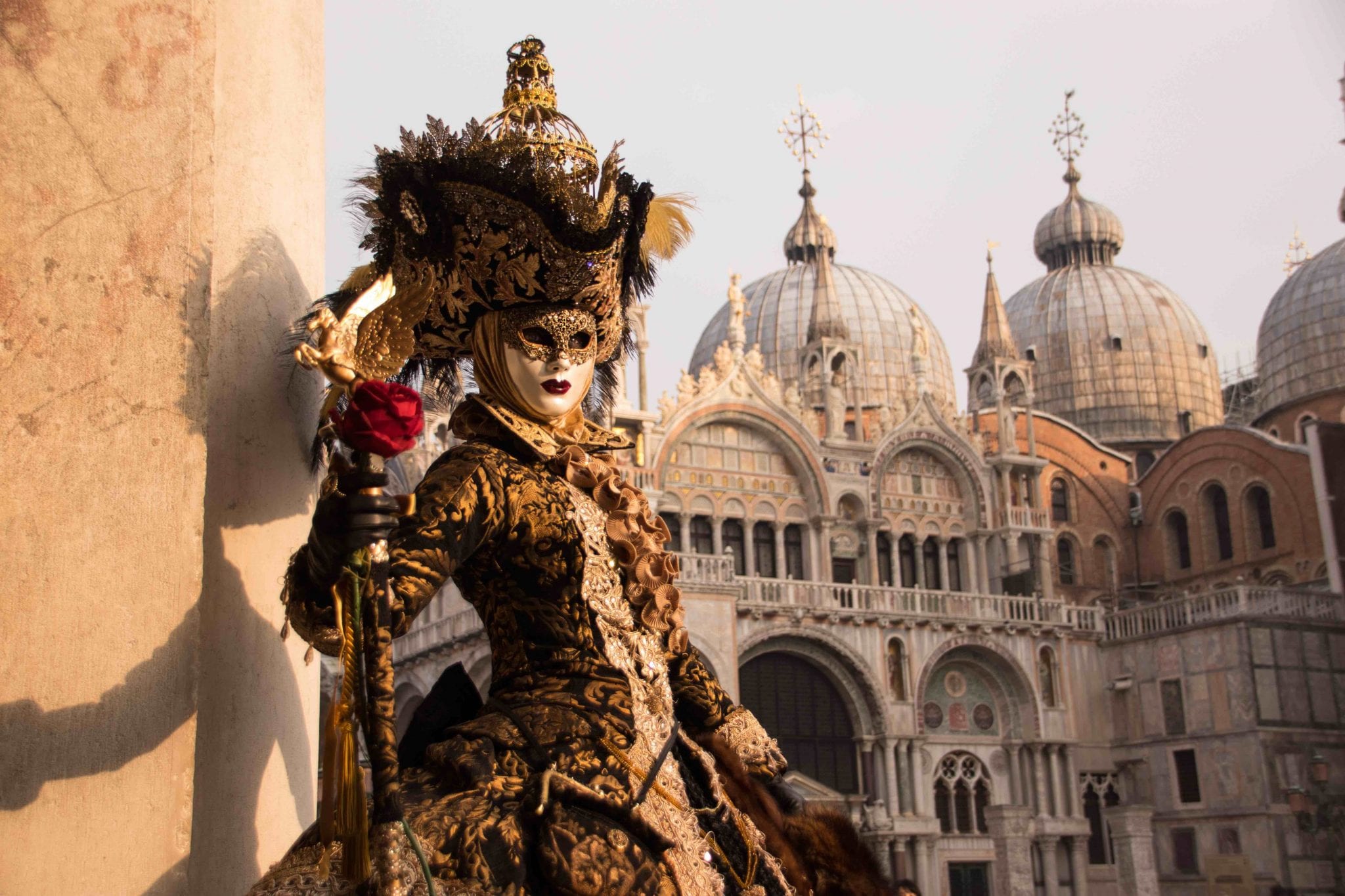
Keep reading to discover all about Carnevale in Venice.
Table of Contents
ToggleVenice carnival history
Where did the idea of Carnevale come from?
During the 40 days of Lent, parties were off-limits—and so was eating foods like meat, sugar, and fats. As a result, people would try to get rid of all of their rich food and drink (and get their partying out of the way!) before Lent. Hence… carnival. (In fact, the word Carnevale is said to come from the Latin words carne and vale, meaning “farewell to meat”!).
According to Venetian tradition, Venice’s carnival got its start in 1162, when townspeople celebrated a victory over the Patriarch of Aquileia. The festival declined during the 18th century. By the 16th century, Venetians were celebrating Carnevale in style.
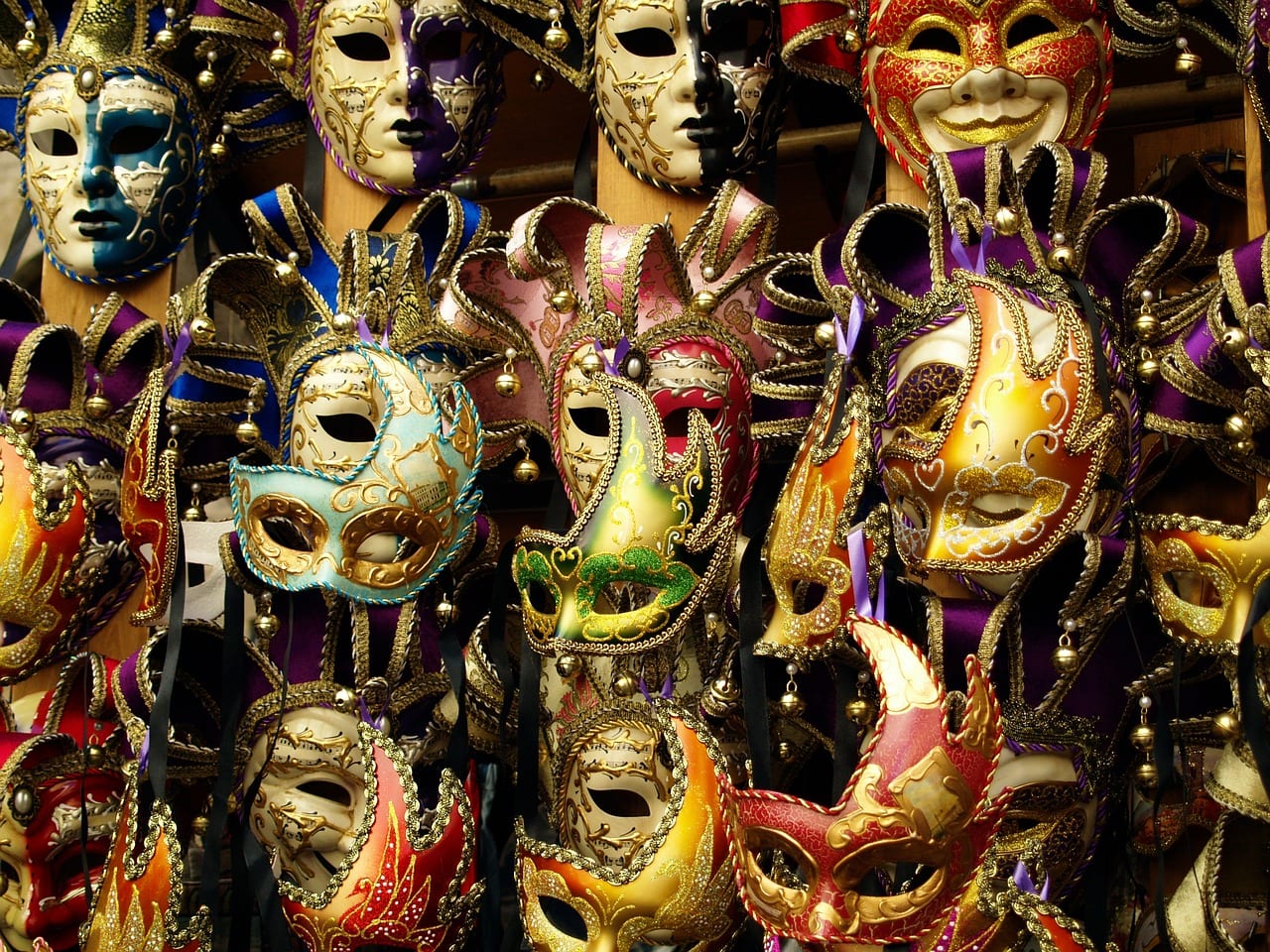
So… you’re saying Carnevale in Venice has been celebrated non-stop since the 13th century?
Not quite. By the 18th century, Venice’s Carnevale festivities were going downhill. With the Austrian conquest of Venice in 1798, mask-wearing—as well as Carnevale—were all but finished. In the 1930s, Mussolini banned the celebrations altogether.
So what changed? In 1979, a group of Venetian artisans banned together to restart Carnevale. If that seems like a ploy for tourism, it was—and it was one that worked. Today, about 3 million people travel to Venice every year for Carnevale. The 1970s are also when the long-forgotten art of mask-making was restarted.
What is Venice’s Carnevale like today?
Today, Carnevale in Venice is a huge celebration that goes on for two weeks. While many events—particularly the opulent masquerade balls—require invitations and have steep ticket prices, many others, like the candle-lit parade of boats, concerts, and street performances, are free and open to the public.
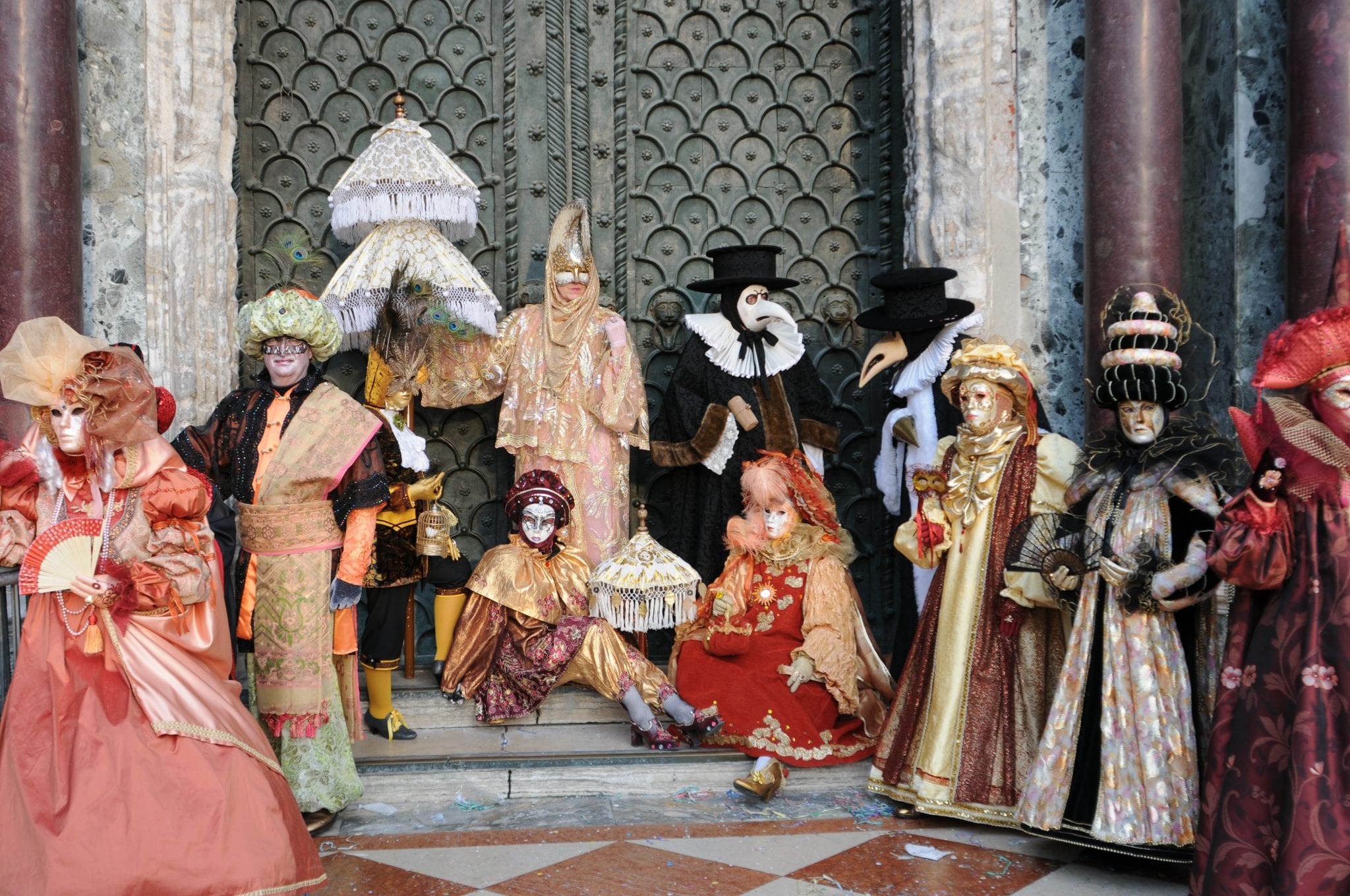
All about Venetian masks
The tradition of masking has a long tradition in Venice. All the way back in 1268, a law even was passed to ban – of all things – putting on masks and throwing perfumed eggs!
By the time of the Renaissance, masks were a fixture of Carnevale celebrations. By the 16th century, the popular Commedia d’Arte troupe performed slapstick comedy in the piazzas of Venice—while masked. Believe it or not, though, masking was hardly just a Carnival tradition.
By the 18th century, Venetians were allowed to wear masks for six months a year. And they took advantage! Black velvet masks, for example, would be worn in “houses of ill repute”—especially gambling parlors—to shield their owners’ identities, as shown in the painting here.
Mask-making in Venice
Mask shops in Venice
First off, be aware that the majority of mask shops in Venice sell cheap, imported masks, a far cry from the artisanal tradition that Venetian mask-making truly is. So do yourself, and the artisans of Venice, a favor, and choose your mask shop carefully. Need help? Here are some of our favorite mask shops in Venice (several of which even run mask-making workshops; check their websites for more!
- Benor Maschere Venezia (S. Croce 1109): Hidden behind Campo San Giacomo dell’Orio, this artisanal mask shop boasts a gorgeous collection, all made there in the workshop.
Ca’ Macana: This Venetian mask shop, located just off Campo San Barnaba, has an unparalleled selection of Carnevale masks. They’re handcrafted in the workshop right there, and you can watch them being made. - Ca’ del Sol Maschere (Castello 4964): Artisans handcraft the Venetian masks at this shop a 5-minute walk from St. Mark’s Basilica; exquisite Carnevale costumes are on sale here, too.
- Il Canovaccio: The artisans at this Venetian mask shop create amazing masks and papier-mâché objects meant for the stage.
When is Venice’s carnevale?
Carnevale in Venice, as with carnival around the world, takes place in the days leading up to Lent. It lasts for 10 days, usually starting at the end of January or beginning of February.
Happy Carnevale!
by Cristina C.
View more by Cristina ›Book a Tour

Pristine Sistine - The Chapel at its Best
€89
1794 reviews

Premium Colosseum Tour with Roman Forum Palatine Hill
€56
850 reviews

Pasta-Making Class: Cook, Dine Drink Wine with a Local Chef
€64
121 reviews

Crypts, Bones Catacombs: Underground Tour of Rome
€69
401 reviews

VIP Doge's Palace Secret Passages Tour
€79
18 reviews

Legendary Venice: St. Mark's Basilica, Terrace Doge's Palace
€69
286 reviews









